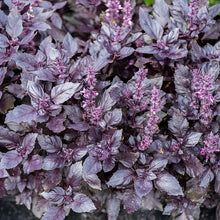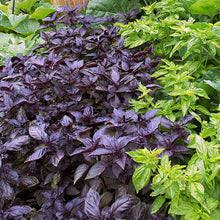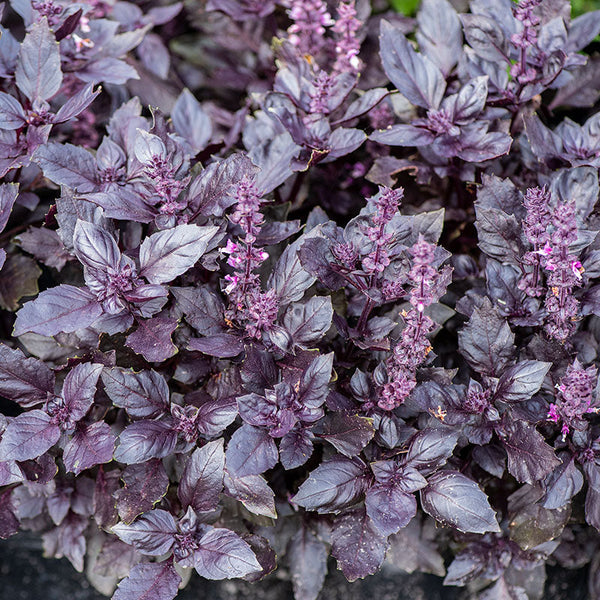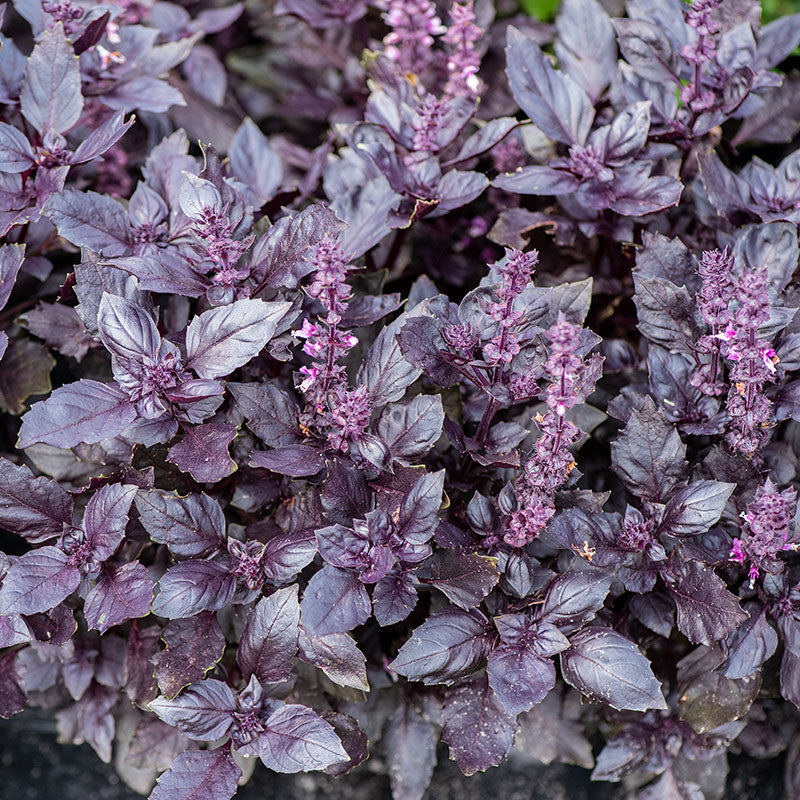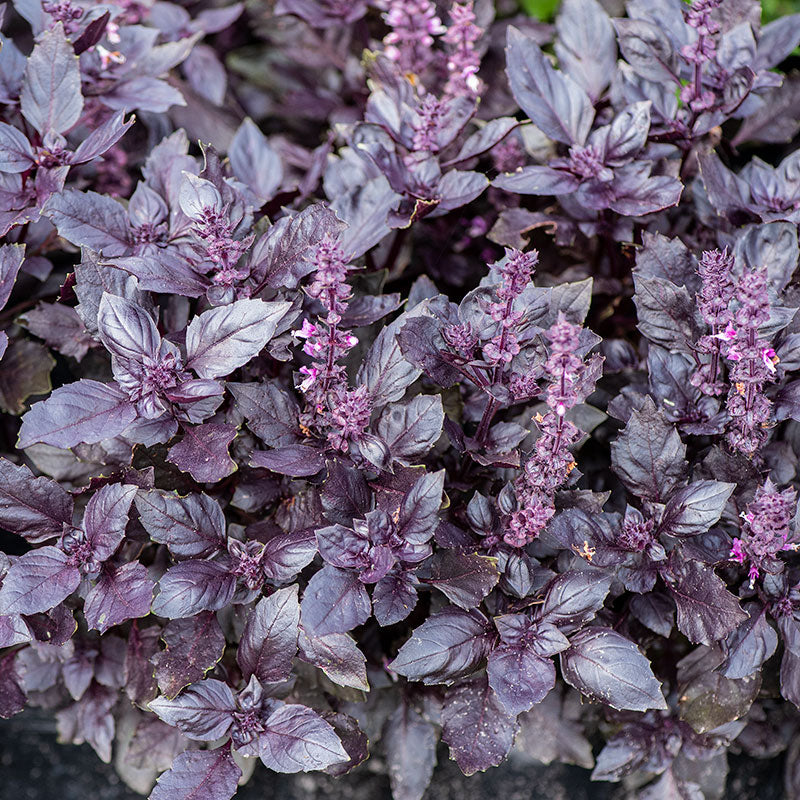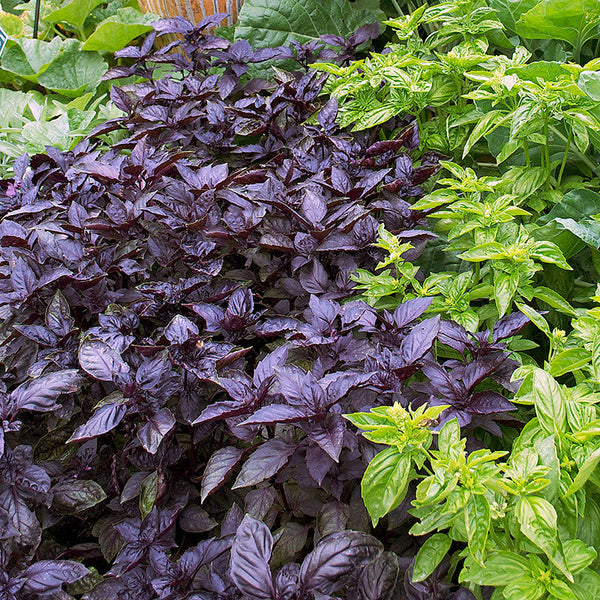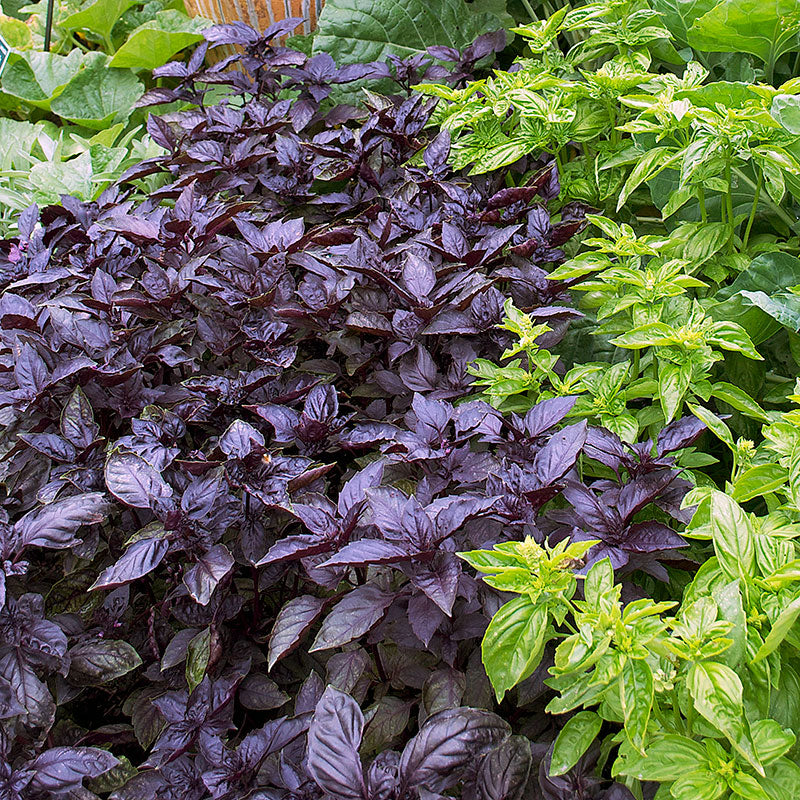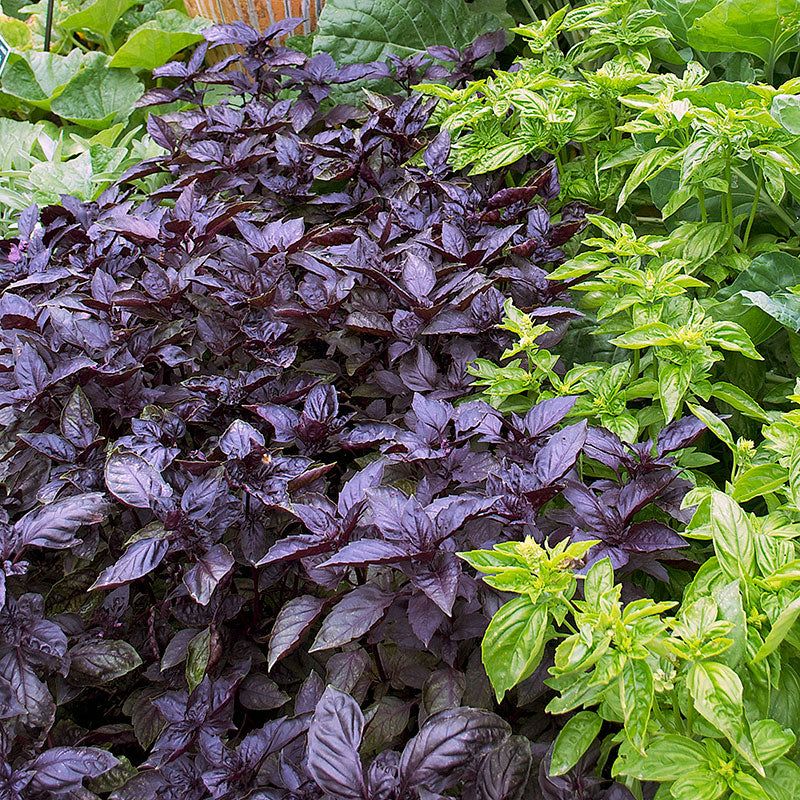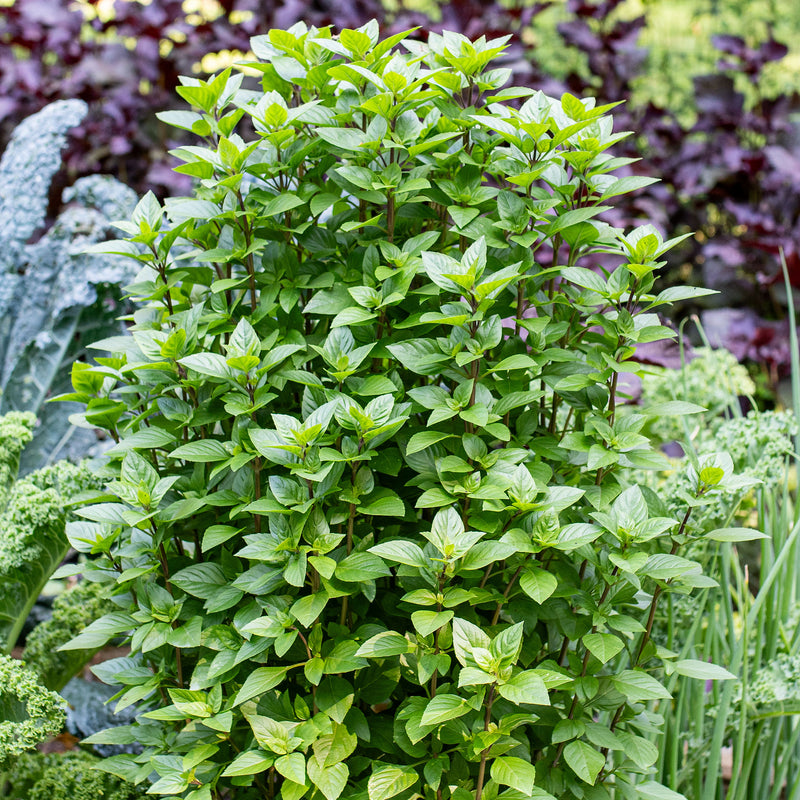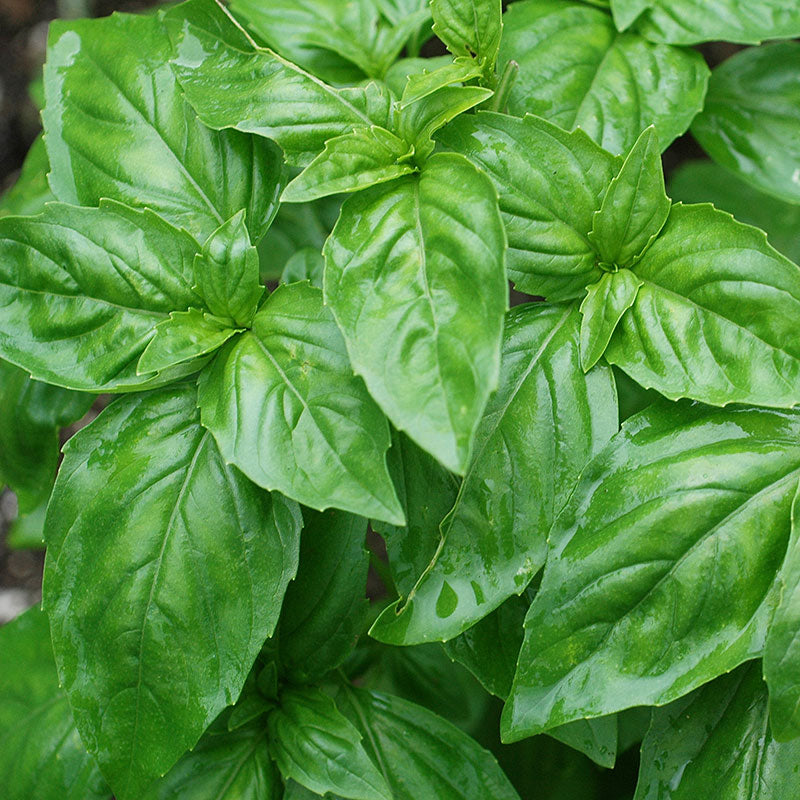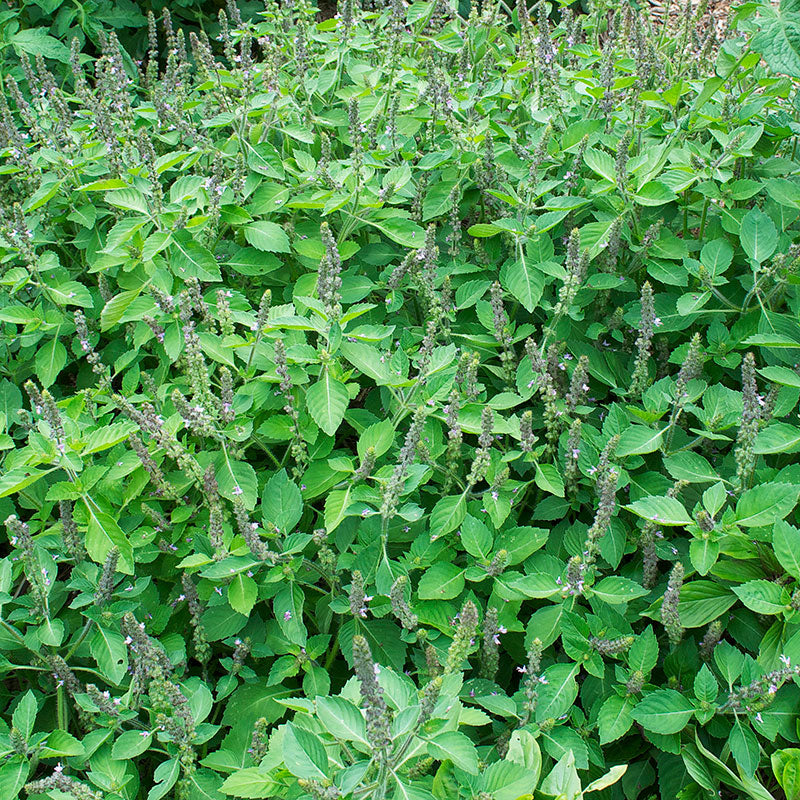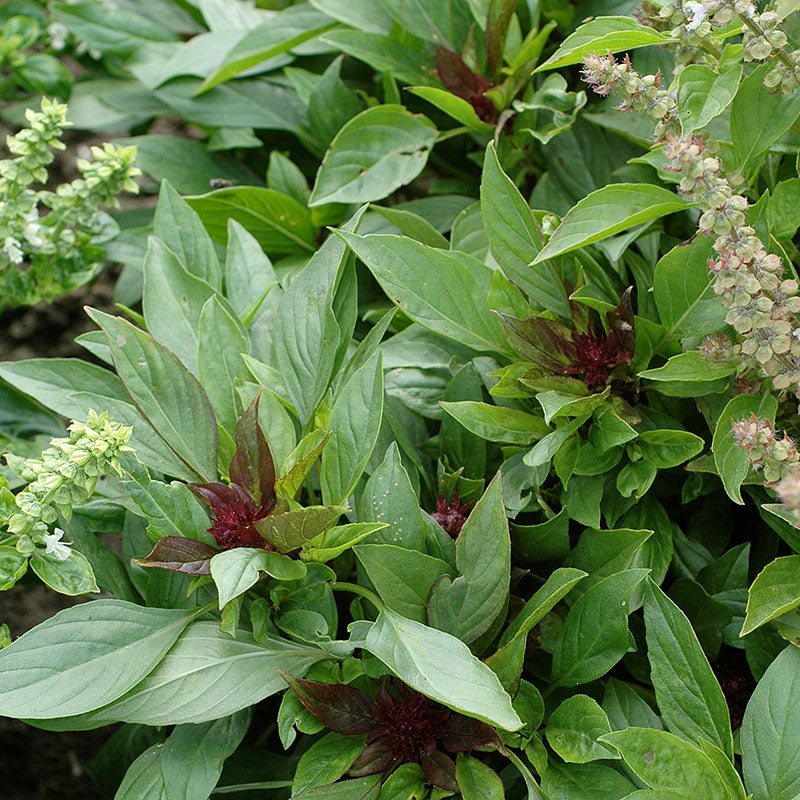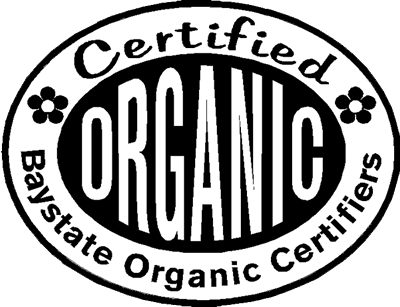Organic Seed
Basil 'Dark Opal' Organic
Ocimum basilicum
Stunning violet-purple leaves and pink flowers make this variety perfect for flower beds and pots. The licorice flavor is ideally paired with summer tomatoes; the dark leaves infuse vinegars with aromatic flavor and a rich plummy color. A member of the mint family, basil is great as an herbal tea for stomach complaints.
SKU #S839OG
Currently Unavailable
Notify Me When Available
Growing Companions






























